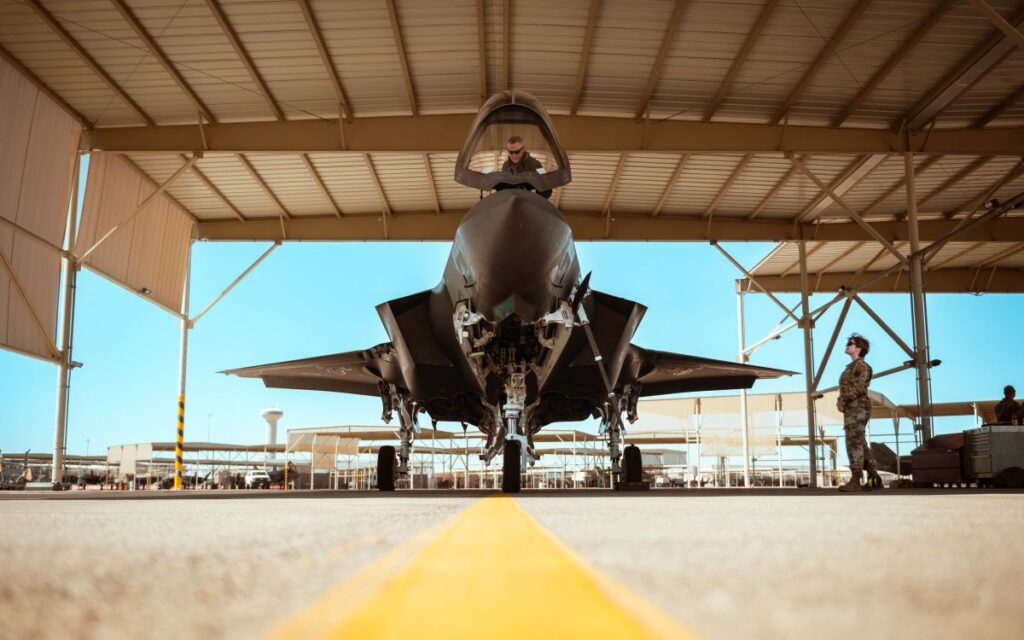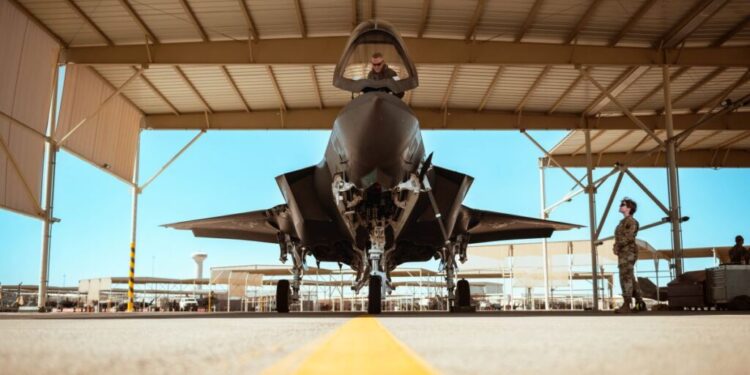
U.S. Air Force Brig. Gen. Jason Rueschhoff, 56th Fighter Wing commander, boards an F-35A Lightning II for his final flight on June 14th at Luke AFB, Ariz. (U.S. Air Force Photo)
The U.S. Air Force Research Laboratory (AFRL) and the program office for the Lockheed Martin F-35 are investing in digital engineering to speed development, as AFRL hosts a ribbon cutting for the Micro-Electronics Digital Engineering Infrastructure on Thursday at Wright-Patterson AFB, Ohio.
AFRL’s DoD Supercomputing Resource Center is to house the new, advanced micro-electronics hardware.
The latter is part of a $70-million investment by the F-35 Joint Program Office and others in advanced, digital engineering, AFRL said.
“These upgrades are designed to accelerate the development of advanced technology and digital solutions to enhance warfighter readiness,” according to the lab. “AFRL’s partnerships with industry leaders have incorporated best commercial practices to significantly reduce development timelines and drive innovation. The upgraded infrastructure supports critical initiatives such as the F-35 program, Navy projects, DARPA and the Microelectronics Commons — a program managed by the Office of the Under Secretary of Defense — as well as other Department of Defense projects.”
Faster development and fewer software setbacks look to be key for the F-35. The incoming Trump administration, backed by anti-manned fighter comments from top Trump adviser Elon Musk, may examine the F-35 program in-depth.
The fiscal 2025 defense authorization bill provides for a delay in the delivery of 20 of 68 F-35s in fiscal 2025 until the defense secretary submits a report on “certain corrective action plans and acquisition strategies that will improve research, development, testing, evaluation, production and sustainment issues and deficiencies identified across multiple areas within the F–35 program enterprise”.
The 48 F-35s authorized for delivery are 30 U.S. Air Force F-35As, nine U.S. Marine Corps F-35Bs, and nine U.S. Navy F-35Cs.
The F-35 JPO has said that it wants to deliver a “fully combat capable” fighter next year with the Technology Refresh-3 software upgrade–the foundation for dozens of envisioned Block 4 weapons and sensors.
A significant part of the effort is rejuvenating laboratory capacity, and Lockheed Martin said that it will invest $350 million over five years in that capacity.
A version of this story originally appeared in affiliate publication Defense Daily.







